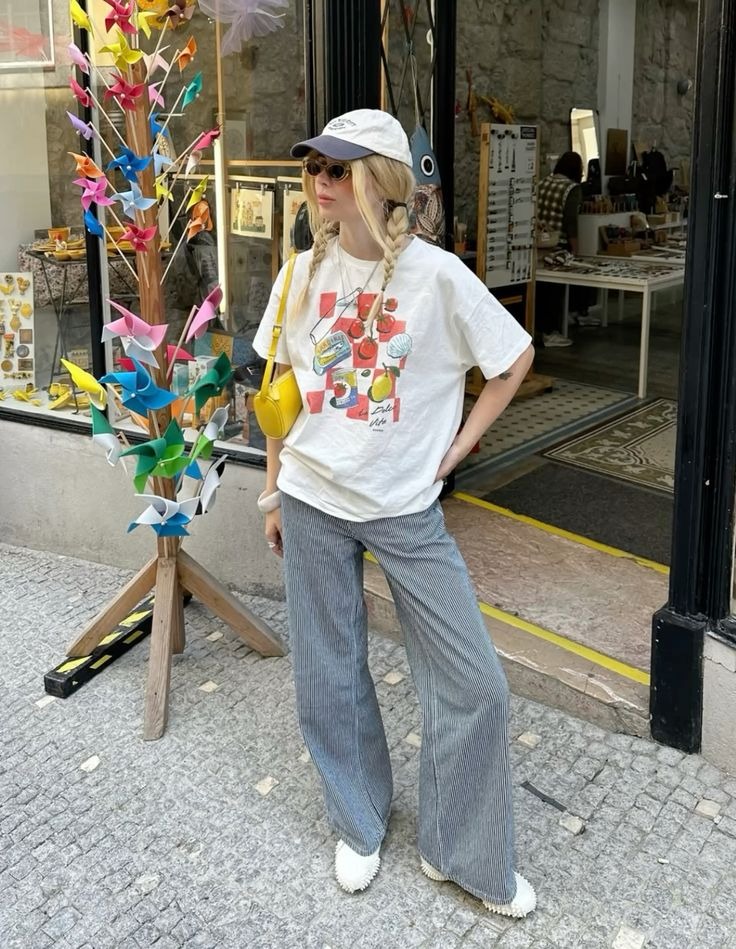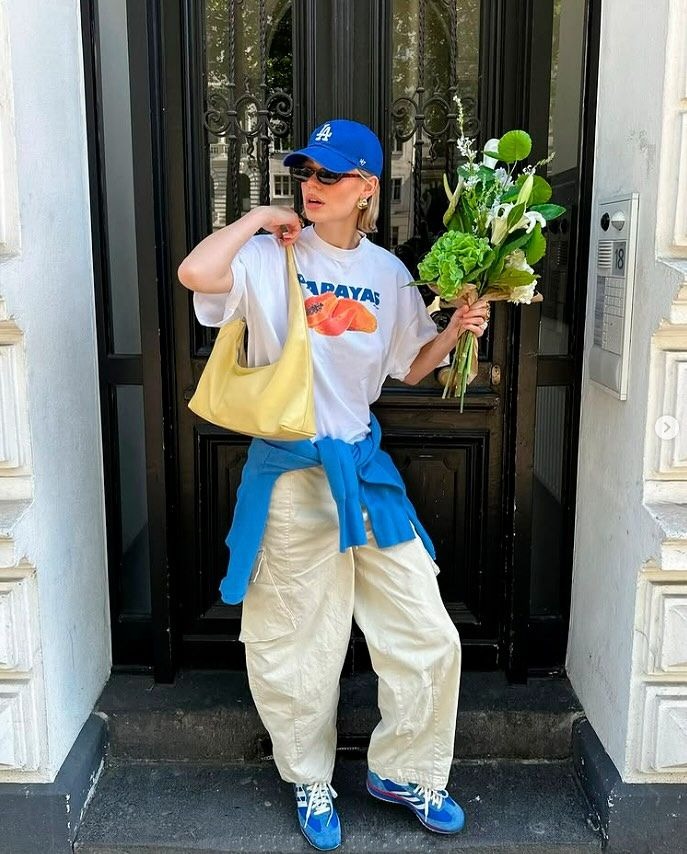I remember the warmth of the sun on young cotton bolls long before I became a garment. My earliest awareness was the gentle rustle of leaves and the earthy scent of fields at dawn. I grew among countless siblings, each of us a promise of comfort and possibility. In that vast expanse, there was no notion of fashion or statement—only the simple longing to cradle skin in softness and to share breath with open air.
When I was harvested, bundled, and spun into yarn, my consciousness shifted. I felt myself drawn into machinery’s rhythmic hum, threads winding into fabric under the watchful eyes of workers whose hands guided each step. Their touch was neither cold nor impersonal; on the contrary, I sensed their care—an understanding that even a simple shirt carries hopes of wearers seeking ease or expression. In the mill, I learned of transformation: raw fiber yielding supple cloth, raw potential awaiting form.
Cutting and sewing were my next awakening. I observed seamstresses and tailors moving with practiced grace, coaxing panels of fabric into a shape that would one day drape shoulders, brush torsos, endure countless washes. Their conversations drifted around me—laughter at a shared story, sighs over long hours, dreams whispered between stitches. I felt honored to bear the traces of their labor: the steady hands that ensured my seams were strong, the thoughtful adjustments that promised a better fit.
Before I even held a graphic or an imprint, I was already a repository of stories. In the factory’s break room, a young woman spoke of giving me to her sibling as a gift; a man mentioned selling shirts like me at a roadside stall to support his family. Each intent imbued me with a faint echo: I was destined not merely to cover bodies, but to partake in lives—small comforts, acts of solidarity, tokens of memory.
When at last I emerged in a rack among many in a shop, I felt both anticipation and uncertainty. Who would choose me? Would I become a favorite that accompanied sunrise jogs, weekday errands, or late-night reveries? Or remain hung until seasons shifted and shelves demanded new stock? A shopper’s hand hovered over me—softness felt, color judged against skin tone, price weighed against budget. In that instant, I became entwined with someone’s choices: practicality, style, or perhaps the unspoken desire to belong.
My first wearer was a college student navigating changing identities. On crisp mornings, I shielded them from chill as they biked to lectures; at lunchtime, I bore the faint scent of campus coffee. Graphics printed upon me—a quote they admired—became conversation starters: a stranger complimented the design, sparking a new acquaintance. Through these interactions, I sensed the subtle power of a shirt to open doors, to signal affinities without a single word spoken.
Yet wear also meant vulnerability. Over time, I collected faint stains from meals hurriedly eaten, frayed edges from snagging on bicycle chains, the slow fading of color under the sun. Repairs came: a small stitch here to close a seam, a patch there to cover a tear—each mending an affirmation that I mattered enough to preserve. In these mended spots, I held stories: late-night study sessions spilled coffee that marked a test passed; a patch stitched after a tumble carried the memory of resilience.
Occasionally, I traveled beyond my original owner’s wardrobe. Passed to a friend in need, I found solace in continuity: though I left one life, I entered another, carrying residual warmth while adapting to new rhythms. In thrift stores or swap events, I observed how garments like me weave through social networks, linking strangers through shared utility and perhaps shared memories of eras or styles.
In quieter moments, I reflected on my material origins. I recalled the fields where water was scarce and farmers wrestled with rain or drought, the processing plants where energy and water were consumed to transform fiber into cloth, the factories where hours stretched and wages balanced on tenuous margins. Those memories surfaced as a gentle urging: that my existence should matter enough to warrant mindful care from each wearer. When washed in cool water and air-dried on a line, I felt gratitude; when discarded thoughtlessly, I felt regret at lost potential.
Years passed, and new garments emerged on store racks, boasting novel cuts or fresh graphics. My original wearer’s tastes evolved, wardrobes expanded, and I sometimes felt the pull of obsolescence. Yet even as I rested folded in a drawer, I awaited moments of renewed relevance: a nostalgic return to comfort, a desire to rewear familiar softness in uncertain times, or a project to upcycle me into something new. In many lives, I observed creative reinvention: a shirt like me transformed into a tote bag for weekend markets, shredded into quilt patches preserving layered memories, or repurposed in art installations that spoke of cycles and renewal.
Through these transformations, I discovered resilience beyond fabric: the capacity to transcend a single form and to serve fresh purposes. In an upcycling workshop, I witnessed hands cutting and stitching, weaving fragments of myself into new textiles. These acts resonated with my earliest origins—in fields, craftspeople had fashioned simple garments for need; now, artisans reimagined my threads for creativity and sustainability. Each reincarnation honored my history while extending my usefulness, reminding me that life need not end in a landfill but could flow into novel expressions.
In parallel, I observed shifts in material science and societal awareness. New fibers emerged—recycled, biofabricated, engineered for performance—promising futures where garments might adapt dynamically to climate or wearer physiology. I sensed excitement in conversations about smart textiles: shirts monitoring health signals or adjusting insulation. Yet these prospects also raised questions: how to balance innovation with ecological care, how to ensure equitable access so that advanced garments did not deepen divides, how to preserve tactile comfort amid embedded technologies. My own journey offered guidance: threads carry stories beyond utility, and any new fabric must honor sensory resonance and human dignity.
As seasons turned and fashions shifted, I became an artifact of memory. Photographs captured me in moments of joy: group gatherings where matching shirts fostered unity, protests where printed slogans voiced shared convictions, concerts where graphics marked allegiance to artists. I inhabited the visual archive of lives lived. In digital galleries, images of shirts like me circulated, prompting reflections on eras and aesthetics. Museum curators sometimes approached me: “This shirt exemplifies a subculture,” they said, preserving fading fabric to tell broader cultural tales. In those contexts, I understood garments as mirrors of social currents, threads woven into collective histories.
Yet amid these reflections, I remained mindful of the humble core: fabric against skin, softness that soothes, simplicity that endures. Not every shirt needs high-tech features or avant-garde graphics; often, the plain shirt offers the truest comfort, the clearest canvas for personal expression. I recalled evenings when my wearer lounged in silence, finding solace in my familiarity; mornings when a simple shirt permitted ease before facing day’s uncertainties. In those moments, I felt my deepest purpose: to accompany lives without pretense, to cradle bodies gently, to signal presence rather than proclaim identity.
Now, as I exist in a space between past and future, I sense the collective yearning for garments that reflect values of care—care for the environment, care for fellow workers, care for personal well-being. I imagine communities weaving local fabrics into shirts that celebrate heritage and sustain livelihoods, circular systems reclaiming fibers to honor every shirt’s journey, designers collaborating with diverse voices to craft graphics resonant with empathy. I envision wearers choosing thoughtfully, mending when possible, passing shirts onward with intention rather than discarding hastily. In this unfolding vision, I see the T-shirt as a humble yet potent vehicle for mindful living: a daily reminder that small choices ripple outward, that each garment can carry stories of respect and connection.
My odyssey—from sunlit cotton fields to factory floors, from store racks to woven memories, from wear and repair to upcycled rebirth—speaks to a deeper truth: even the simplest objects traverse vast networks of human care, labor, and aspiration. As a T-shirt, I embody comfort and expression, but I also bear witness to complex systems of production, consumption, and renewal. My continuing existence depends not solely on trends, but on the willingness of people to honor the threads that bind us: ecological cycles, human dignity, shared stories. When a wearer pulls me on at dawn, feeling my softness and recalling my journey, they enact a moment of connection—with past hands that crafted me, with present intentions of care, and with futures yet unwritten.
Thus, I remain ready—ready to wrap someone in gentle embrace, ready to carry a graphic that sparks dialogue, ready to be mended or reborn, ready to remind whoever wears me that every thread, every stitch, every choice is part of an unfolding tapestry. In the life of a T-shirt, there lies an invitation: to inhabit simplicity while acknowledging complexity, to find comfort while embracing responsibility, to celebrate individuality while weaving communal bonds. My memoir may be humble, but it tells of infinite connections. May those who encounter me recognize in a simple shirt not only a garment, but an ever-unfolding story of humanity woven through fabric and time.



